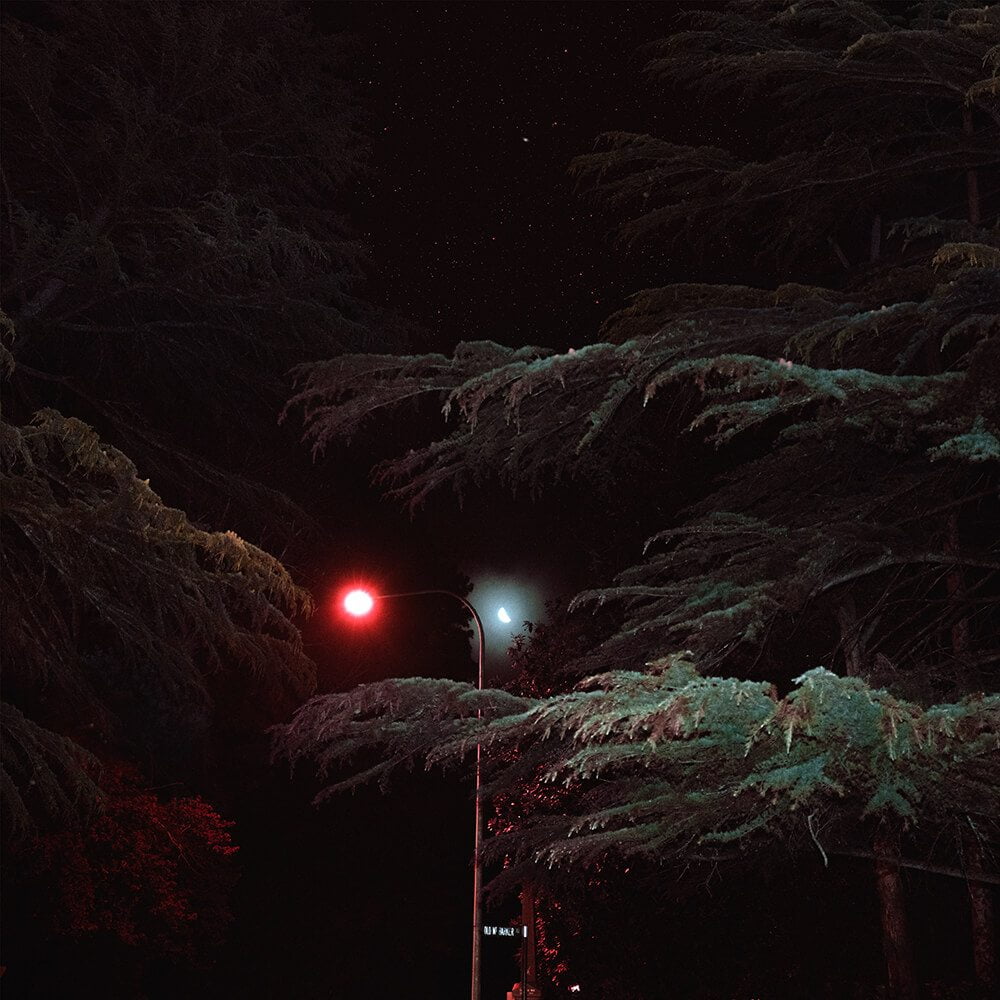INTERVIEW
Impenetrable Darkness
WITH JOSEPH HAXAN
An interview with Joseph Häxan
“For me the mystery is far more interesting than the resolution…”
Joseph Häxan won our ‘AFTER DARK’ theme with a troubling and impenetrable image – a vulnerable, bloodied body, glistening silver party streamers, and an empty, dark abyss – which our jury described as conjuring the worst emotions of the night – fear, horror, violence, distress…
We posed some questions to Joseph, keen to understand more about his influences and creative process, and his responses, covering topics as broad as the importance of personal brand, Gwen Stefani’s album art, and the dark allure of suburbia, were as exciting and challenging as you might expect from his image-making….
(Banner image: Fire in the Sky, from the series Body Horror)
Hi Joseph. Congratulations on winning the theme. How did you react to the jury’s comments?
Thank you! I loved reading the comments. ‘Impenetrable’ struck me, because for me the mystery is far more interesting than the resolution. You know that body is bloodied; something caused it, and now it’s limping away, so where is it going? Where are those streamers coming from? Who took that picture? They’re questions that I won’t answer, and I know that can be frustrating for some. I’m focused solely on the moment the image was captured, like it exists in a vacuum and whatever happened before and after is totally secondary. I think fear, horror, violence and distress are a given, but I’d encourage the viewer to go back and look at the series imagining that everything in the scene was happening in total silence. See if that changes your reading of the images.
The image is from the series ‘Body Horror’ which draws on themes of the occult and provokes the senses with naked bodies dripping with sticky crimson blood, lit by white-hot camera flash against empty suburbia and forest scenes. Can you tell us a bit more about the ideas that informed the series? And how it follows on from your previous series ‘Nativity’ which would appear to channel similar motifs…?
I love that you mention ‘white-hot flash’ – that’s exactly the term I use. The flash for me is the most integral part of the series. I’m shooting frequently in almost pitch-black darkness, so the flash becomes a sort of alien elucidation of the surrounds, it shows you where you are, but things don’t ever look quite the way they should in the daylight. That flash gives me a window into something hidden, something I can only ever glimpse – that’s where the people in the pictures exist. The series was developed as a sort of quasi-sequel to ‘Nativity’ with the premise that I’d begin to show the deity or god that the cult of that series was worshiping. I’m working on it as part of my honors project at university and ‘Body Horror’ is far from a resolved series so I’m cautious to speak prophetically about it. What I will say is that the series is informed by my research project on psychoanalytic readings of the skin. Julia Kristeva’s essay on abjection is my big inspiration right now.
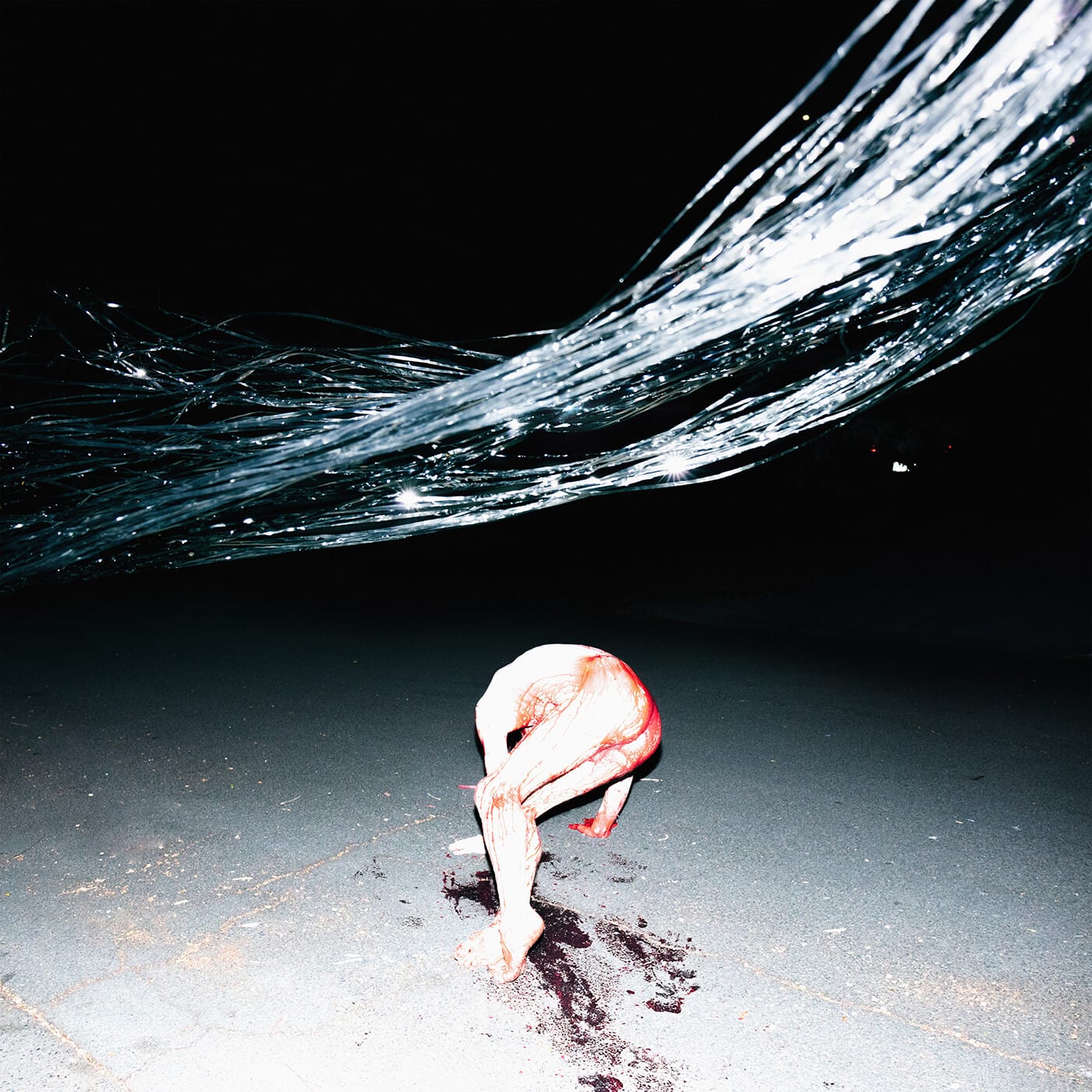 Visitor from the Stars, Joseph’s winning ‘AFTER DARK’ image, from his series Body Horror
Visitor from the Stars, Joseph’s winning ‘AFTER DARK’ image, from his series Body Horror
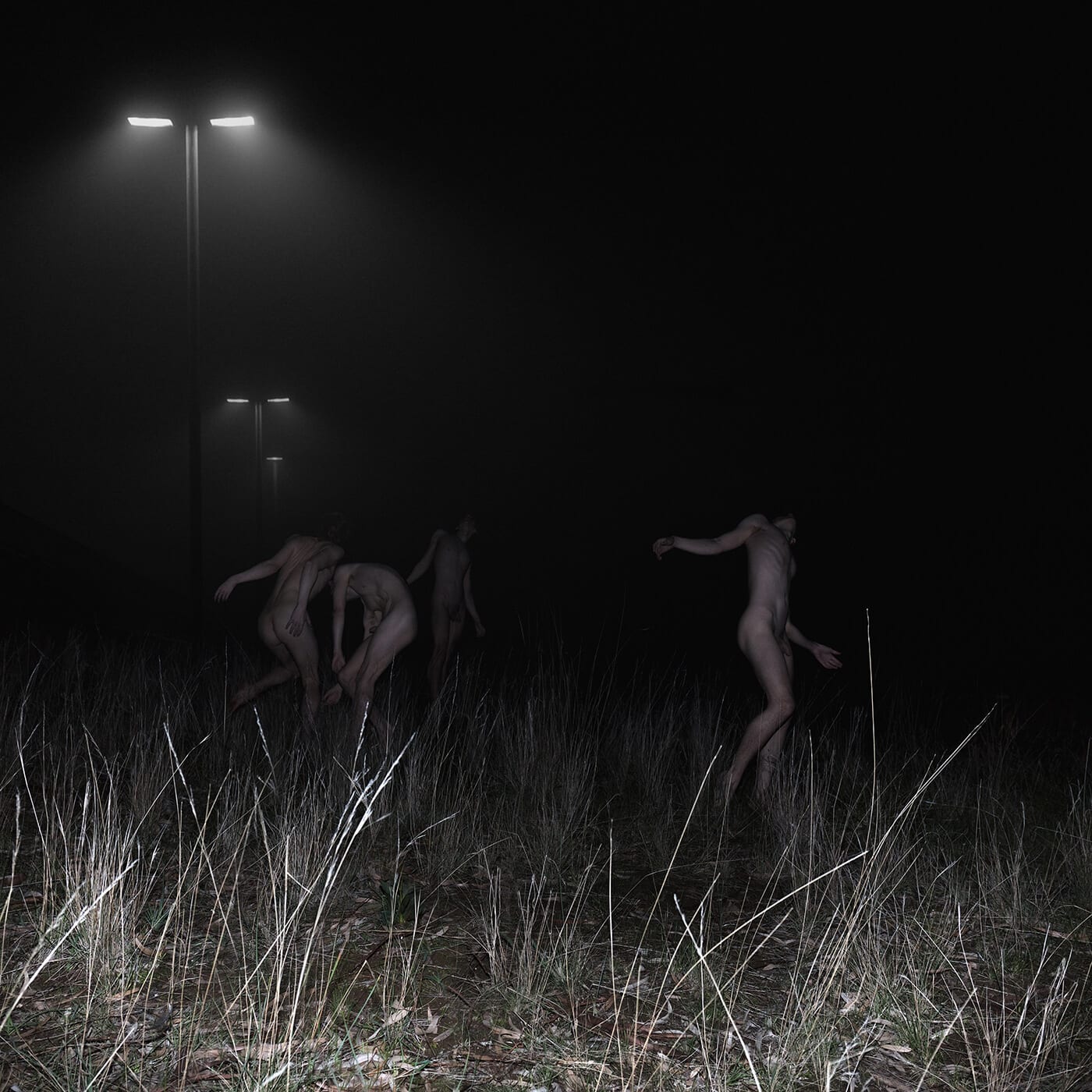 City to Void, from the series Nativity
City to Void, from the series Nativity
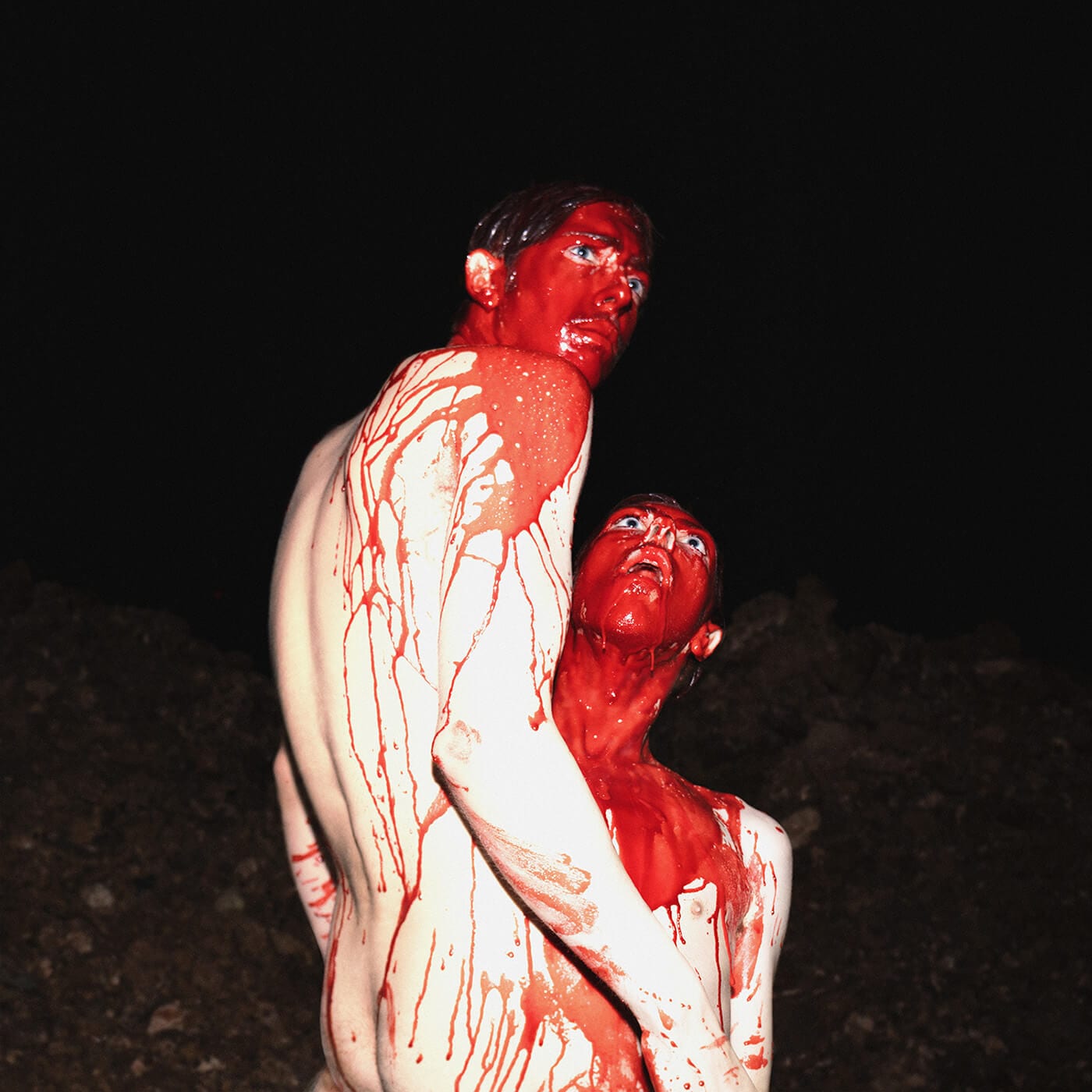 Blood, from the series Body Horror
Blood, from the series Body Horror
The series has a kind of found-footage feel to it and yet there’s clearly a level of mastery that belies that impromptu, voyeuristic aesthetic – your framing is inventive, there are props at play and, if I have read correctly, you also employ a fair amount of digital post-processing. How do you achieve this balance – creating something raw and impulsive, while maintaining full creative control? Can you talk us through the preparatory, shooting and studio phases?
I remember one man commenting on a picture of mine shared by a magazine saying “When are we gonna see one of these pictures with good lighting?” and I thought that was just the most bizarre thing to say. I wondered whether he was referring to studio lighting? The dreaded ‘golden hour’? That’s never been for me. I am my own model, so every person you see in my pictures is me, replicated. Sometimes I’m in the picture on location, other times subjects and props are photographed separately. I don’t enjoy frivolity of mise en scène, and so I approach every image as a black canvas to which objects and characters of visual significance are placed with intent. The pictures are made, not taken and I have in mind a scale of minimum visual elements to maximum thematic payoff. The struggle then is to maintain an air of documentary, or spontaneity and a lot of that is owed to the flash.
Have you had the opportunity to exhibit ‘Body Horror’ yet? I imagine that you could do some really exciting things with the curation…
No, I haven’t just yet, but I have big plans. In November BlueThumb is hosting my first solo exhibition in Melbourne, Australia and ‘Body Horror’ will be the star of the show. I’ve bought thousands of fly pupae and have decided to hatch them and then use them to make fly-covered frames for the images. I would also love to include some of the props I’ve made for the series in the show. I’m in the early stages of producing a ‘skin suit’ for an image in the series and think that will likely become a piece all of its own.
I’ve read that you’ve conducted studies into Devil worship, and that one of your series, ‘The Black Mass’, was created in association with The Satanic Church in Salem, Massachusetts. What is it that drew you into this subject area, and what are your views on it now?
Yes, when I developed my series ‘The Black Mass’ as an undergraduate I was researching the hysteria of the Puritans in Salem. I contacted The Satanic Church, and was assisted by a very kind member of the congregation in finding amazing resources and imagery. I remember her noting that although the church “didn’t believe Satan existed, they still loved him” and I knew I’d found a kindred spirit. I think Satan represents total ‘otherness’ and a willingness to stand in opposition and defy the omnipotence of social rule. Satanism to me is a kind of druidism for the modern world, to act as nature does, following personal instinct, accepting your insignificance and not fearing judgment or reckoning. I did that research at a time in my life when I thought you needed to be serious at all times to be taken seriously. I think my newer work is a bit more theatrical and accepts itself as a construction.
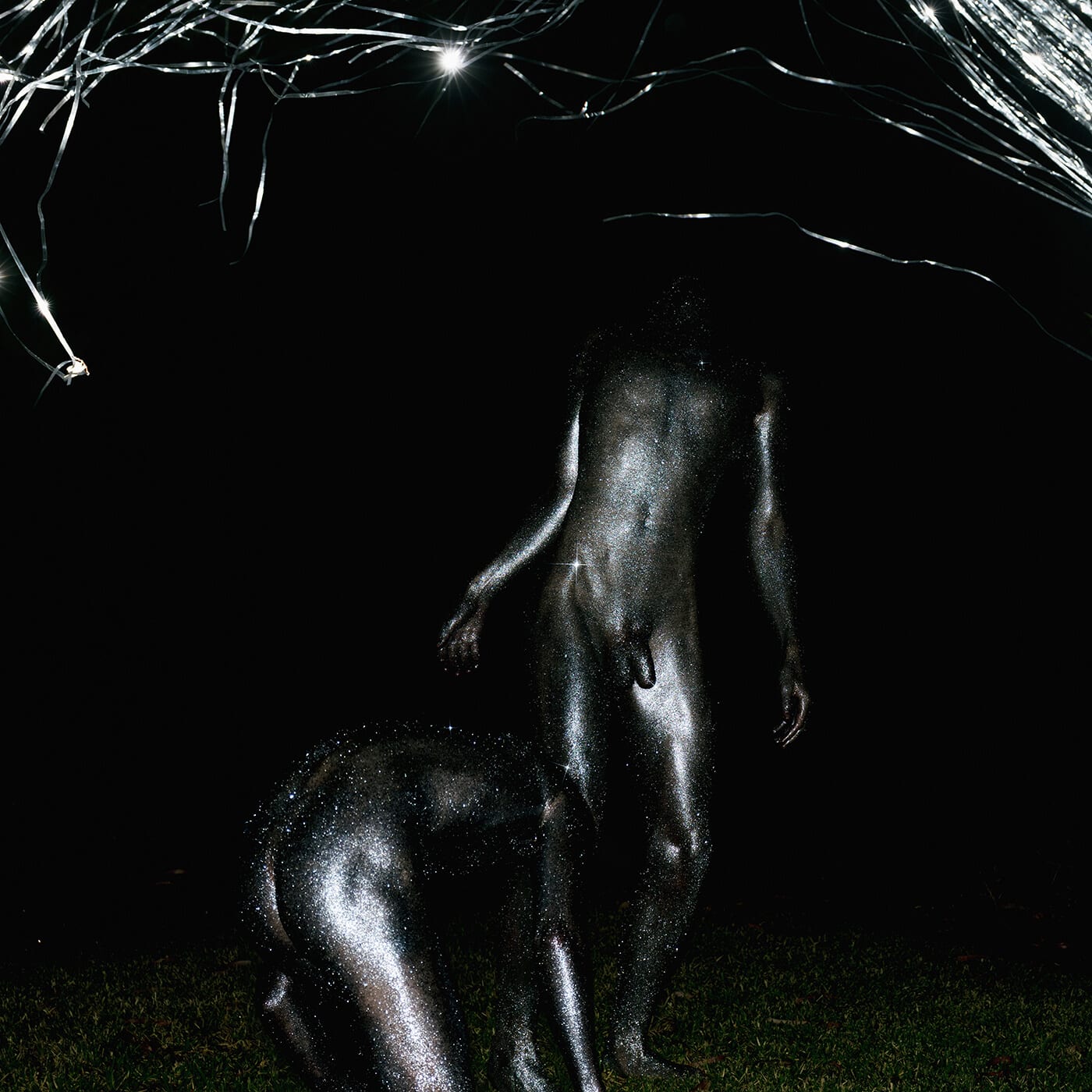 Cold Love, from the series Body Horror
Cold Love, from the series Body Horror
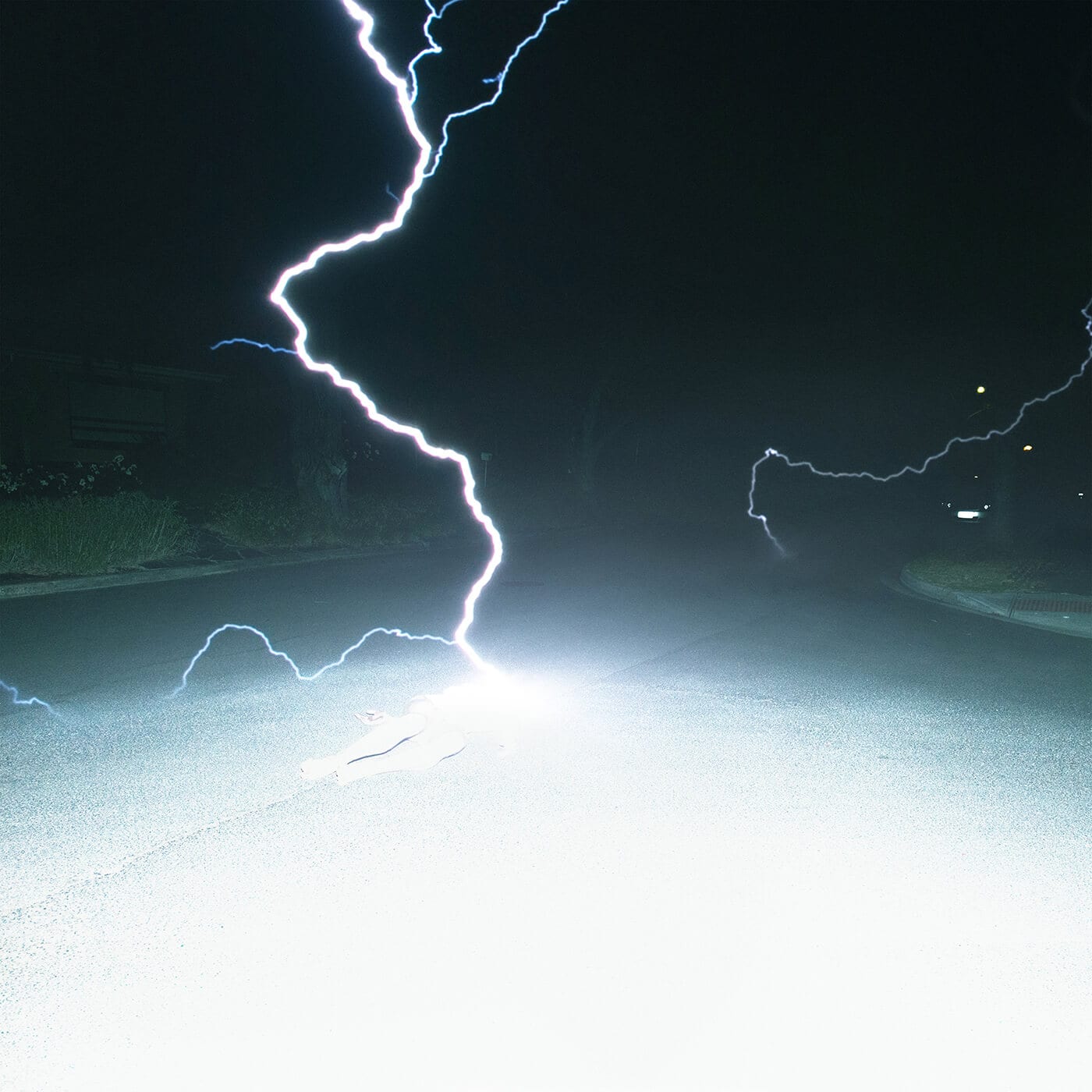 War of the Worlds, from the series Body Horror
War of the Worlds, from the series Body Horror
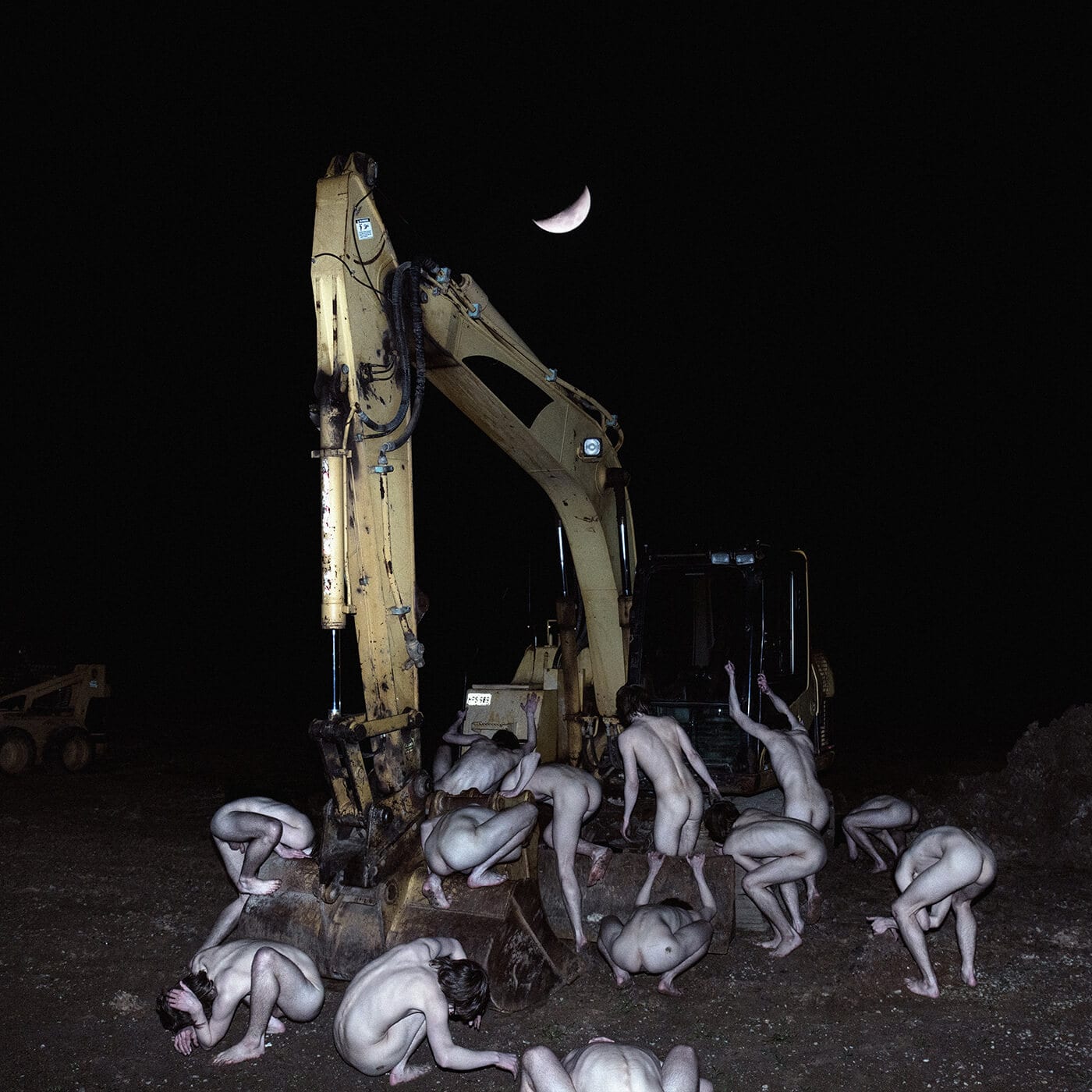 13 Slaves, from the series Nativity
13 Slaves, from the series Nativity
How, if at all, has growing up in Adelaide influenced your work?
Well I love LA noir photography and film – Mulholland Drive is one of my all-time favorites. Adelaide is actually pretty visually similar to LA, just on a micro scale. We have very similar weather, similar vegetation and even building style. There’s something truly horrific about that sort of deep, stifling suburbia. If the Devil is alive he lives in the suburbs and he’d be in advertising.
I’m intrigued by the relationship between your personal work, and your commercial work as a re-toucher. In that professional guise your role is to create a shiny perfection, but you seem to rally against it into your personal work – pulling back the veneer of suburban life and revealing the sinister realities behind. Is there a conscious tension between the two, or am I reading too much into things?
No, you’re not reading into it too much, but I think the two go together better than you might think. I love shiny perfection, I love the gloss and crispness of editorial and enjoy retouching immensely. Growing up I had an album by Gwen Stefani, ‘The Sweet Escape’ with this cover by Jill Greenberg. I didn’t know who Jill Greenberg was back then but I thought that image must have been taken by the best photographer in the world. Now looking at it I see the limitations of mid 2000s retouching, but it hasn’t lost that aspirational gloss. Gwen is god-like on the cover, it’s the perfect celebrity portrait. I think you can take beautiful images of nasty things, just like lots of people take hideous pictures of things they think are beautiful. Of course my history retouching is used practically in my art making, but they also inform one another. Knowing that the beauty is a veneer makes it infinitely more interesting.
I read a quote from you – “It’s easier to see that your pictures have made an impact if someone tells you they’re disgusting.” – and loved the provocation it describes, that the role of art can be to revolt and confound as well as to satisfy. Is this something you’re drawn to in the photography of others? Who inspires you?
I think it’s good to be challenged. I love having my beliefs and assumptions disagreed with (within reason) because it forces you to justify and question the way you feel. I do enjoy provocation, it’s kind of a game to me to see how strong a reaction I can get. It’s so easy to make a lot of people uncomfortable and I think that’s reason enough for doing it. I am fascinated by marketing, I love analytics and statistics, and the way marketers commodify desires and fears. Provocation is the ultimate marketing tool. I market myself in a certain way, I’m a brand, like everyone is – to see the way other people construct their ‘brand’ and how different it is to mine is wonderfully confusing, challenging and inspiring. I’m inspired by all sorts of things – lines of dialogue, paintings, films, theories. I will often latch on to the delivery of a line from a film and repeat it over and over while I’m taking pictures, trying to mimic the way the actor said it perfectly. As for artists I’m inspired by David LaChapelle, Stanley Kubrick, Lars Von Trier, Zdzislaw Beksinski, David Lynch, Karyn Kusama, Jonathan Glazer and a range of others.
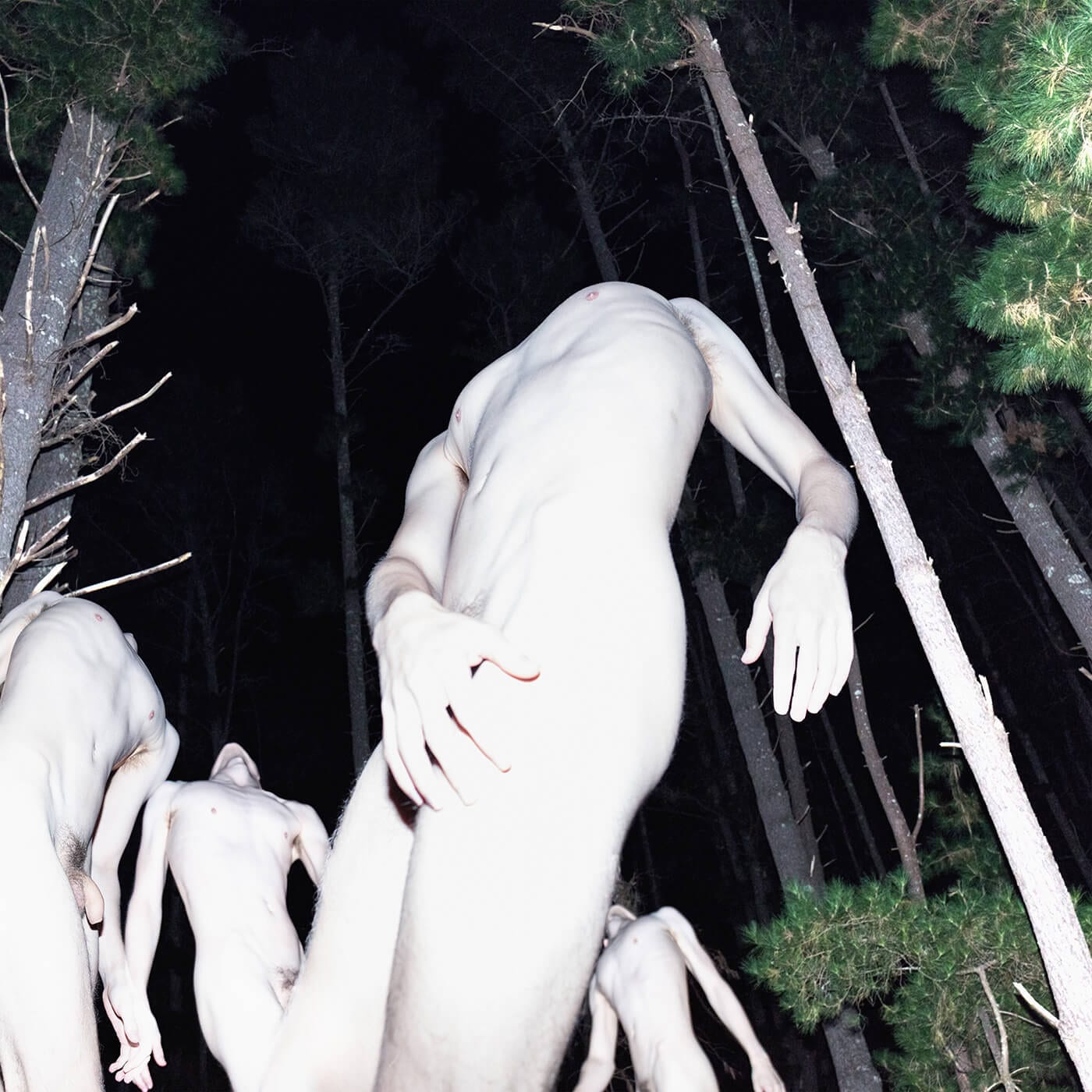 White Pines, from the series Body Horror
White Pines, from the series Body Horror
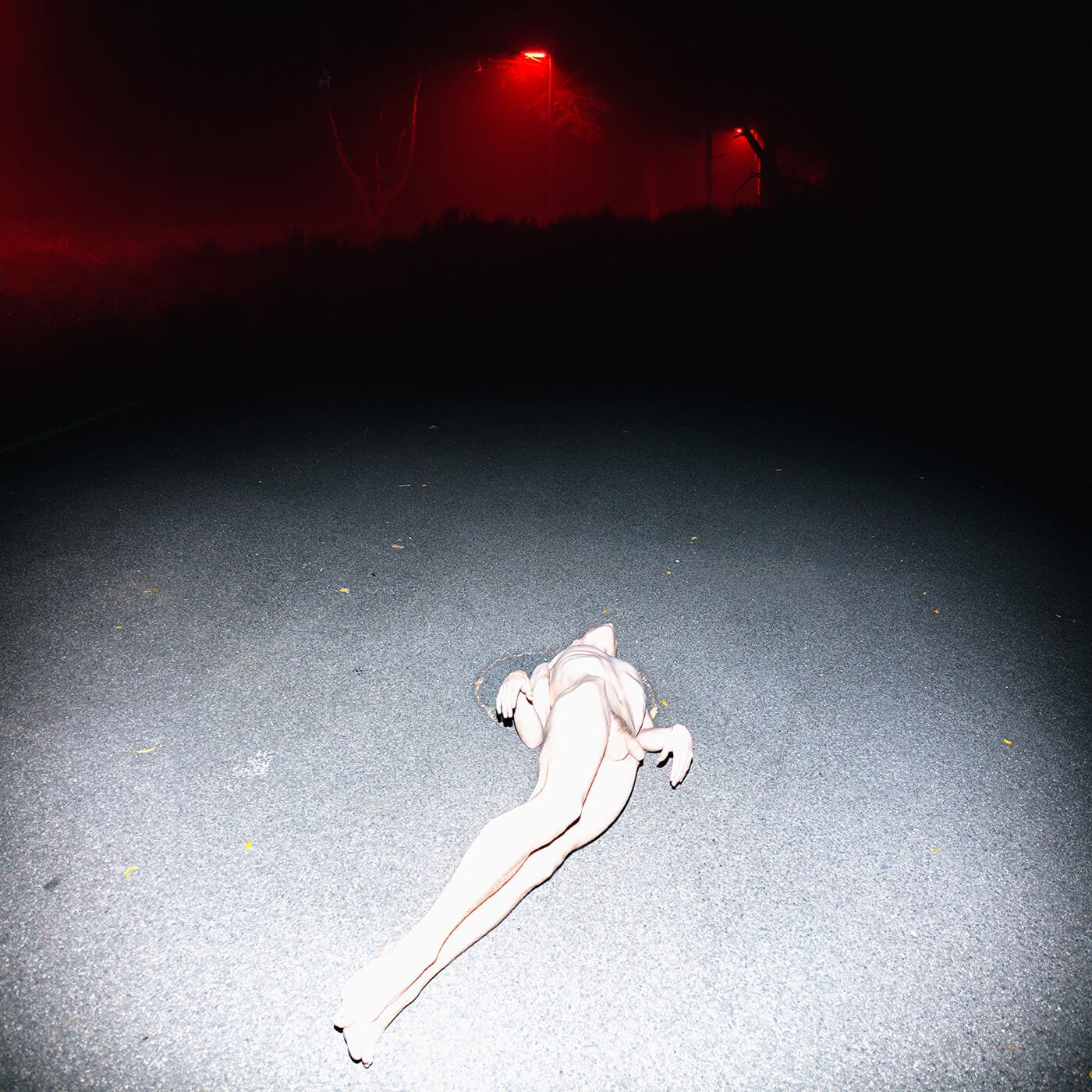 Mulholland Drive, from the series Body Horror
Mulholland Drive, from the series Body Horror
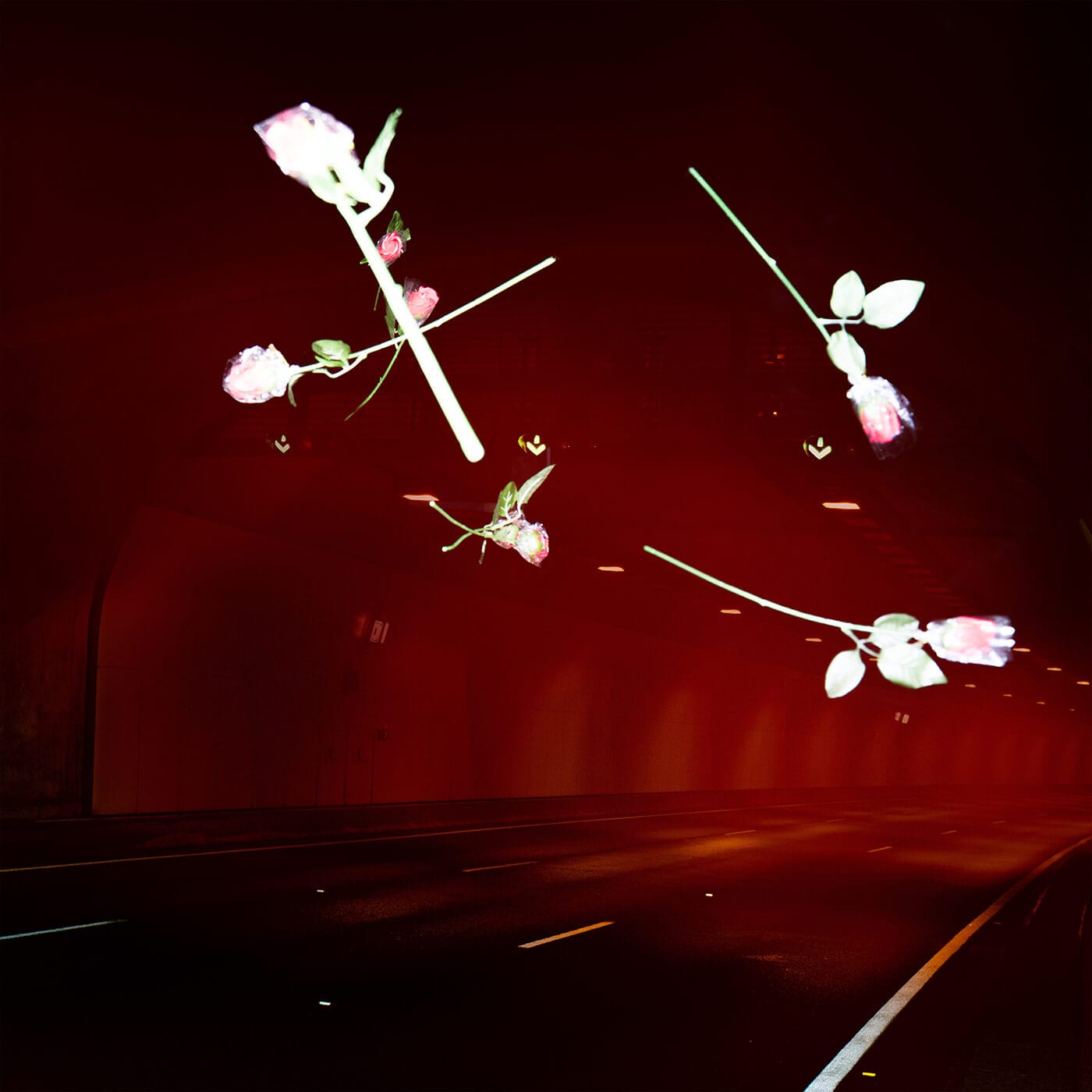 Celebrity, from the series Body Horror
Celebrity, from the series Body Horror
As well as photography, you’re also a talented film-maker, and have a number of short films to your name. How does your still image work inform your film work, and vice versa?
I’m a film-maker at heart, and the pictures I take are screenshots of a film I’ll make one day. I was drawn away from making films a number of years ago because I was dissatisfied with the viewing mediums I had at my disposal for exhibition. Films are very expensive to make and to display, and I just didn’t have the resources. I will get back to them one day, and I hope to parlay what I’ve learnt about visual media in my photography to become a better cinematographer.
I believe you’re currently studying at the University of South Australia. What’s the most important lesson that formal tuition has taught you (so far)?
That’s correct, I’m studying visual arts (honors) this year. Without a doubt the best thing about attending university or college is that you’re thrust into a scene of people who know different things than you. I really struggled to make friends for the first two years of my degree and definitely felt more confident in my knowledge of the way the art scene works than I should have. When I started exhibiting I had no idea how anything worked and really felt like a fish out of water, I missed entry into prizes and shows because I didn’t have any friends to tell me about them. Everything in this world is ‘who you know’ and University is like a matchmaker for career paths. Making connections with people, even if you find it somewhat difficult like I do, is so essential.
And finally Joseph, what can we expect from you over the next couple of years?
I’d say to expect bigger productions, new locations and some CGI…
